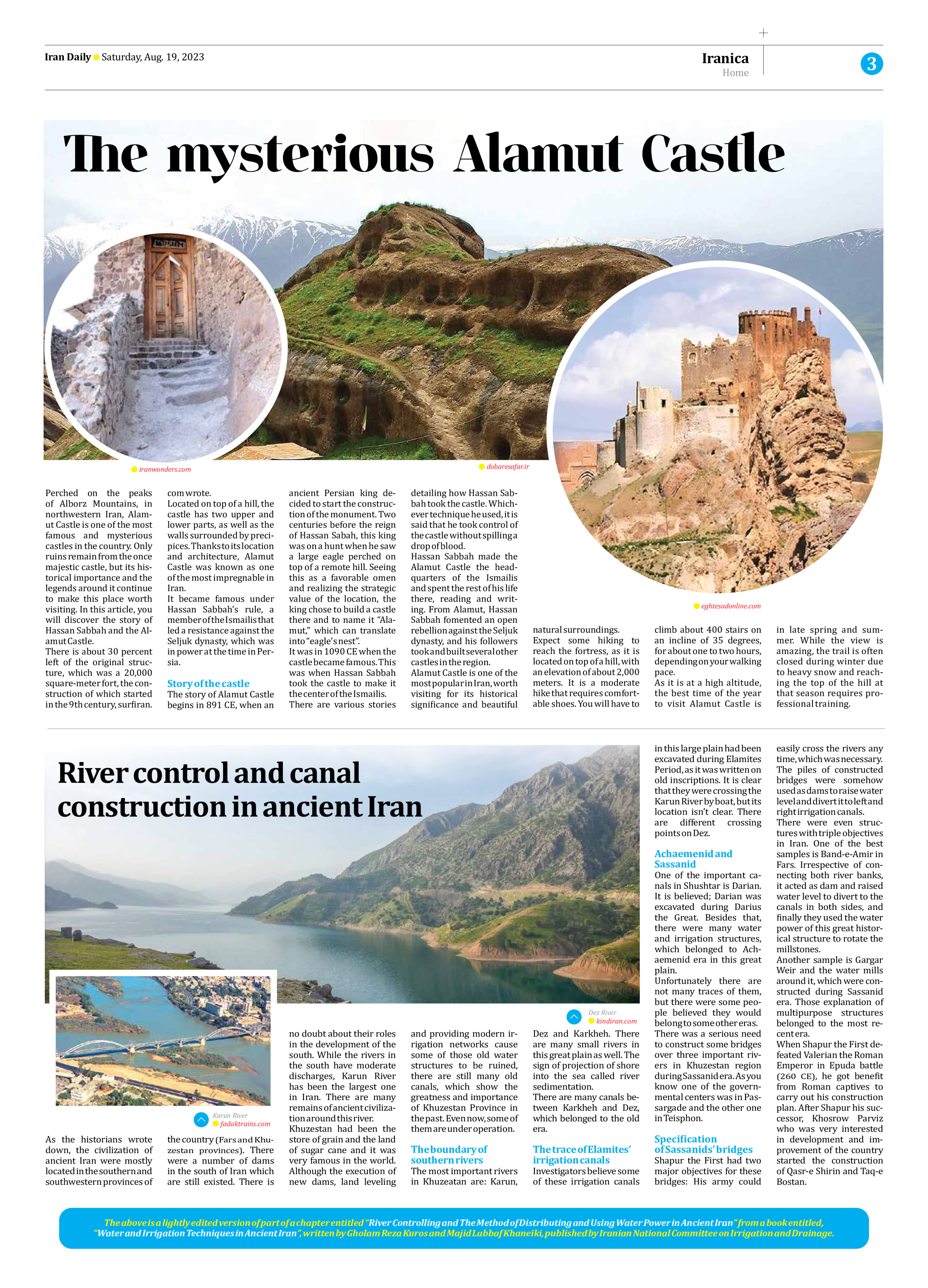
River control and canal construction in ancient Iran
As the historians wrote down, the civilization of ancient Iran were mostly located in the southern and southwestern provinces of the country (Fars and Khuzestan provinces). There were a number of dams in the south of Iran which are still existed. There is no doubt about their roles in the development of the south. While the rivers in the south have moderate discharges, Karun River has been the largest one in Iran. There are many remains of ancient civilization around this river.
Khuzestan had been the store of grain and the land of sugar cane and it was very famous in the world. Although the execution of new dams, land leveling and providing modern irrigation networks cause some of those old water structures to be ruined, there are still many old canals, which show the greatness and importance of Khuzestan Province in the past. Even now, some of them are under operation.
The boundary of southern rivers
The most important rivers in Khuzeatan are: Karun, Dez and Karkheh. There are many small rivers in this great plain as well. The sign of projection of shore into the sea called river sedimentation.
There are many canals between Karkheh and Dez, which belonged to the old era.
The trace of Elamites’ irrigation canals
Investigators believe some of these irrigation canals in this large plain had been excavated during Elamites Period, as it was written on old inscriptions. It is clear that they were crossing the Karun River by boat, but its location isn’t clear. There are different crossing points on Dez.
Achaemenid and Sassanid
One of the important canals in Shushtar is Darian. It is believed; Darian was excavated during Darius the Great. Besides that, there were many water and irrigation structures, which belonged to Achaemenid era in this great plain.
Unfortunately there are not many traces of them, but there were some people believed they would belong to some other eras.
There was a serious need to construct some bridges over three important rivers in Khuzestan region during Sassanid era. As you know one of the governmental centers was in Passargade and the other one in Teisphon.
Specification
of Sassanids’ bridges
Shapur the First had two major objectives for these bridges: His army could easily cross the rivers any time, which was necessary.
The piles of constructed bridges were somehow used as dams to raise water level and divert it to left and right irrigation canals.
There were even structures with triple objectives in Iran. One of the best samples is Band-e-Amir in Fars. Irrespective of connecting both river banks, it acted as dam and raised water level to divert to the canals in both sides, and finally they used the water power of this great historical structure to rotate the millstones.
Another sample is Gargar Weir and the water mills around it, which were constructed during Sassanid era. Those explanation of multipurpose structures belonged to the most recent era.
When Shapur the First defeated Valerian the Roman Emperor in Epuda battle (260 CE), he got benefit from Roman captives to carry out his construction plan. After Shapur his successor, Khosrow Parviz who was very interested in development and improvement of the country started the construction of Qasr-e Shirin and Taq-e Bostan.
The above is a lightly edited version of part of a chapter entitled “River Controlling and The Method of Distributing and Using Water Power in Ancient Iran” from a book entitled,
“Water and Irrigation Techniques in Ancient Iran”, written by Gholam Reza Kuros and Majid Labbaf Khaneiki, published by Iranian National Committee on Irrigation and Drainage.







